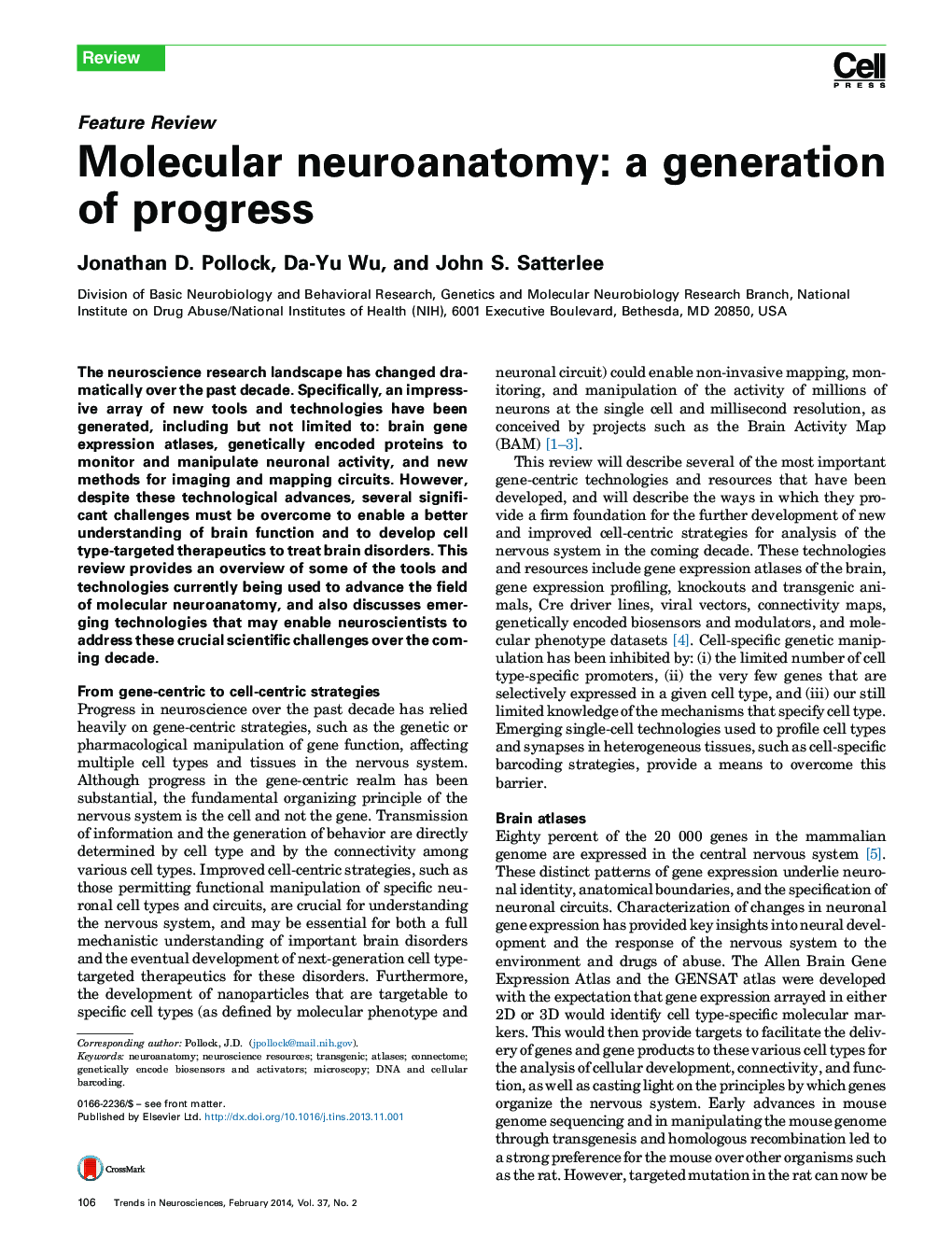| Article ID | Journal | Published Year | Pages | File Type |
|---|---|---|---|---|
| 4354204 | Trends in Neurosciences | 2014 | 18 Pages |
•Compelling technologies and resources for neuroscience are highlighted.•Atlases, the connectome, and genetically encoded sensors and activators are reviewed.•Methods for molecular phenotyping of brain cell and tissue types are described.•The use of DNA barcoding to catalog neuronal cell types and connections is presented.•It is argued that New technologies are needed for defining cell types and connectivity.
The neuroscience research landscape has changed dramatically over the past decade. Specifically, an impressive array of new tools and technologies have been generated, including but not limited to: brain gene expression atlases, genetically encoded proteins to monitor and manipulate neuronal activity, and new methods for imaging and mapping circuits. However, despite these technological advances, several significant challenges must be overcome to enable a better understanding of brain function and to develop cell type-targeted therapeutics to treat brain disorders. This review provides an overview of some of the tools and technologies currently being used to advance the field of molecular neuroanatomy, and also discusses emerging technologies that may enable neuroscientists to address these crucial scientific challenges over the coming decade.
